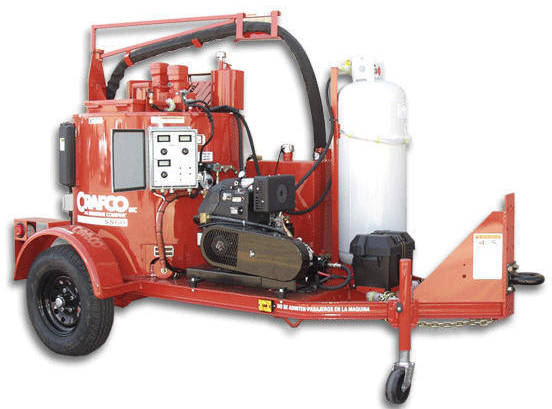CALL NOW FOR YOUR FREE QUOTE! CALL US AT (603) 472-4002
Bedford Sealcoating - sealing NH driveways since 1996
When asphalt is new it can be somewhat soft during summer months.
- Avoid parking your car in the same spot all the time, because of the repeated compaction due to the weight of your car, it could make small depressions in the asphalt.
- Refrain from placing decorative planters or other heavy objects on the driveway.
- Try to avoid any hard wheel cutting or standing turns. Make sure the car is moving before turning the wheel.
- Try not to park your boat or a heavy trailer on the pavement. If you must try putting a piece of plywood beneath each wheel and the trailer hitch to diffuse the weight.
Over time your new driveway will become less soft as the sun oxidizes the pavement and the asphalt begins to harden.
Helpful hints on maintaining your driveway for the long term.
Things to avoid on newly paved driveways.
How long do I wait before I can seal my driveway for the first time?
You should sealcoat your new asphalt within the two years of construction, but most recommend to wait at least 90 days (we recommend waiting six months to a year). Asphalt needs between 60 and 90 days to fully cure. If the sealer is applied before the pavement has cured, the oils in the asphalt will work their way to the surface and the sealer will not adhere. If you are having issues with the driveway's surface being very soft, wait until it hardens before sealing. The sealer can exacerbate the problem.
As time goes by keep an eye out for cracks in the asphalt.
As your driveway ages it will eventually develop some type of cracking in the binder of the asphalt. Cracks are the major cause of pavement deterioration leading to asphalt failure. They allow moisture penetrate the asphalt concrete. Untreated cracks become filled with incompressible materials, creating stress on the surrounding pavement, leading to further cracks. This cycle, repeated again and again, will accelerate your pavement's breakdown. Proper repair of cracks in your driveway is the most important step to successful driveway maintenance.
Sealcoating is the method of protecting your asphalt pavement by applying a thin coating of an asphalt sealer to the pavement surface. Generally, one coating of sealer is sufficient for most homes, occasionally larger families with many cars or a large amount of traffic on the driveway may require two coats, but we rarely recommend a second coat. The actual application of sealer should not be put on too thick, or too often. Driveways that are sealed too heavily or too often will have a buildup of sealer that will lead to "spider cracking" which is when the sealer itself cracks. The sealcoat by design is very hard; because of this hardness, it not as flexible as the asphalt beneath it. As your driveway shifts over the years, fine cracks can develop in the sealer if it is too thick or heavy. This can make your driveway look worse not better. The sealer is designed as a wear product, meaning it's meant wear off before you reapply it. The goal is to, wear the sealcoating and not the surface of your driveway.
In general, it is recommended to seal your driveway every two to three years, although this can vary depending upon the condition and use of the driveway. If your not sure whether or not it is time to seal your driveway look at your driveway to see any of stone in the asphalt binder. If you can see the stone in the binder you know you have bare asphalt and it is time to seal your asphalt driveway.
Regularly seal the driveway over time. ( but not too often)
Our residential services area includes the following towns:
Bedford, Amherst, Auburn, Bow, Candia, Chester, Derry, Dunbarton, Goffstown, Hollis, Hooksett, Hudson, Litchfield, Londonderry, Merrimack, Milford, Nashua, New Boston, Pelham, Salem, and Windham.
Asphalt repairs.
As the driveway settles over the years and cracks develop you might find yourself with areas that are heavily cracked or pot holed. A good solution can be to have that area repaired with cold patch or new asphalt. There are several choices on the type of repair based upon several factors.
- Cut and patch repair- The most expensive type of repair in which the failed asphalt is cut out with an asphalt saw. The sub-base of the driveway is then graded and compacted. Then a tack coat is applied to increase the adhesion between the old and new asphalt before new asphalt is installed. This is the longest lasting repair.
- Infrared repair- The damaged asphalt is heated by a special infrared patching machine before mixing in fresh asphalt then compacted. The benefit of an infrared repair is that the repair is seamless. This is a somewhat newer technology and is not widely available.
- Pot hole repair- Less expensive because of the reduced labor costs. Pieces of failed asphalt are removed and the area blown clean before new hot asphalt is installed. This method of repair is not as permanent as a cut and patch repair
- Cold patch- Least expensive. Recycled asphalt product is installed cold as with the pot hole repair. This is often used during winter months when most asphalt plants are closed. This is also the least permanent method of the three.
When considering the cost of an asphalt repair always keep in mind the overall cost of the driveway. If the cost of the repair is over thirty percent of the cost of a new driveway it is usually no longer cost effective.


